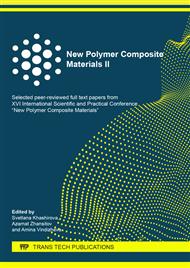p.367
p.375
p.382
p.388
p.394
p.400
p.408
p.413
p.419
The Effect of Surface Treatment of PET Films on Adhesive Properties
Abstract:
In this work we studied the effect of surface treatment of PET films, which are widely used in food packaging, on the adhesion value of ink layers based on polyvinyl chloride. To give high barrier properties to packaging laminates, the films used in their structure are coated with a nanolayer of aluminum oxide (AlOx). However, these films have a disadvantage associated with the low adhesion of adhesive and ink layers to the AlOx nanolayer. To eliminate this disadvantage, aluminium oxide nanolayer is additionally coated with various polymer coatings. In this work we studied the effect of a polyacrylic coating applied on top of an AlOx layer on improving the adhesion of ink layers. For PET films used in food packaging, optical and surface properties are also important. In this regard, additionally we measured surface free energy, coefficient of friction, and optical properties of the studied PET films. We also highlight the relationship of contact angles of wetting and the work of adhesion for the printing ink with the measured adhesion of ink layers.
Info:
Periodical:
Pages:
394-399
Citation:
Online since:
October 2020
Authors:
Price:
Сopyright:
© 2020 Trans Tech Publications Ltd. All Rights Reserved
Share:
Citation:


